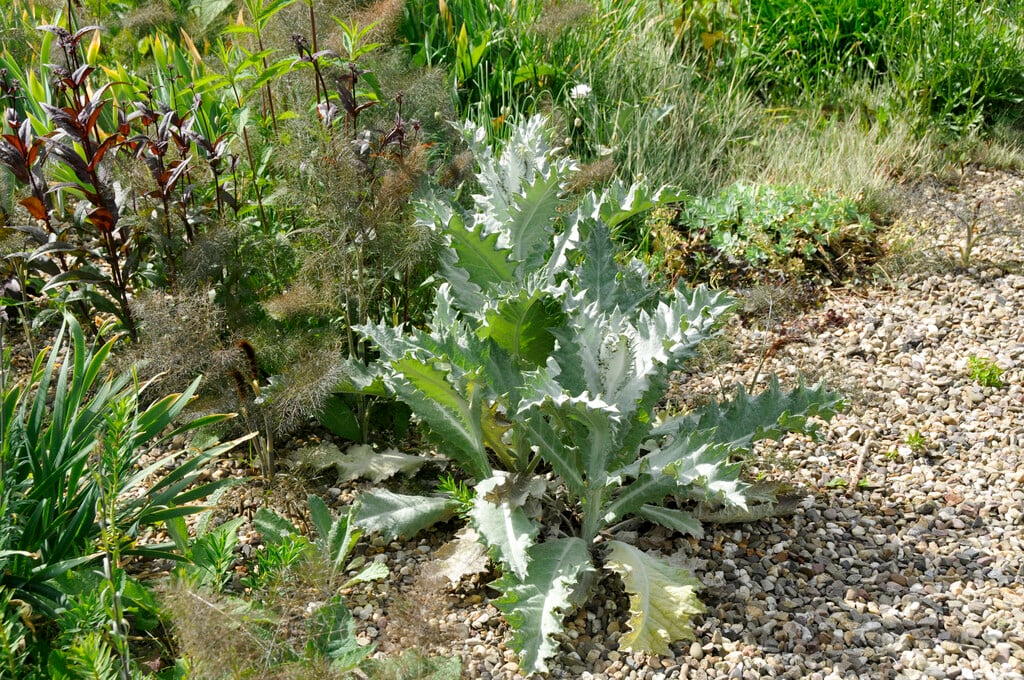Onopordum nervosum
reticulate thistle
A tap-rooted biennial forming a rosette of silvery-grey, spiny leaves to 50cm long, with prominent pale veins. Leafy, branched flowering stems to 2.5m tall are produced in the summer of the second year, bearing clusters of rounded, spiny-bracted, rosy-purple flower-heads
Size
Ultimate height
1.5–2.5 metresTime to ultimate height
1–2 yearsUltimate spread
0.5–1 metresGrowing conditions
Moisture
Well–drainedpH
Alkaline, NeutralColour & scent
| Stem | Flower | Foliage | Fruit | |
| Spring | Green Grey Silver | |||
|---|---|---|---|---|
| Summer | Pink Purple | Green Grey Silver | ||
| Autumn | ||||
| Winter |
Position
- Full sun
Aspect
South–facing or West–facing
Exposure
Exposed or Sheltered Hardiness
H7Botanical details
- Family
- Asteraceae
- Native to GB / Ireland
- No
- Foliage
- Deciduous
- Habit
- Columnar upright
- Genus
Onopordum are are upright biennials with a basal rosette of simple or pinnately lobed, grey-hairy leaves and large, thistle-like, pink or purple flower-heads in summer
- Name status
Correct
How to grow
Cultivation
Grow in fertile, well-drained neutral to slightly alkaline soil in full sun; may self-seed freely. Ideal for a gravel garden or wild areas
Propagation
Propagate by seed sown in containers in a cold frame, or in situ in autumn or spring
Suggested planting locations and garden types
- Architectural
- Coastal
- Gravel garden
- Wildlife gardens
- Cottage and informal garden
Pruning
No pruning required
Pests
Diseases
Generally disease-free
Love gardening
Sign up to receive regular gardening tips, inspiration, offers and more
View our Privacy Policy
Get involved
The Royal Horticultural Society is the UK’s leading gardening charity. We aim to enrich everyone’s life through plants, and make the UK a greener and more beautiful place.

